Costa Rica consists of seven provinces: San José, Alajuela, Cartago, Heredia, Guanacaste, Puntarenas and Limón. Each province has its own charm and invitation to stay. Costa Rica is not just dense rainforests with humid climates. In the province of Guanacaste there is a dry forest which blooms wonderfully in the summer or dry season.
San José is the tourist hub of Costa Rica. From here you can get to almost every corner of the country by shuttle or public bus. In the province of Alajuela it is quite humid all year round, but nevertheless it is always pleasantly warm. You can take a closer look at the highlight of the region, the Arenal Volcano, on a hike through the rainforest. Coffee lovers will get their money’s worth in the province of Cartago. There are several coffee plantations where you can learn about this bean and also enjoy it in a hot drink.
Active travelers will like to visit Heredia because here you can go on exciting rafting tours through an untouched rainforest and see tons of animals. Guanacaste is the driest province of Costa Rica and contains dry forests quite different from the dense jungle. The Rincón de la Vieja volcano is a magnet for visitors who will marvel at bubbling mud holes which signifies volcanic activity. The provinces of Puntarenas and Limón are where most of the beaches in Costa Rica are located. The sprawling province of Puntarenas is the country’s largest and invites both surfers to let off steam in the waves of the Pacific and epicures who like to laze on the beach and let the sun shine on their bodies. Limón is Costa Rica’s Caribbean paradise. Here the pace is a little slower than in the rest of the country and with Tortuguero and Cahuita the province has two national parks where you can wonderfully observe animals from the water and from land.
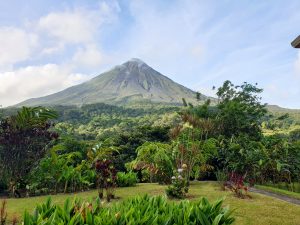
Alajuela is not just the city where the Juan Santamaria International Airport is located, it is an entire province in Costa Rica that stretches as far north as the country’s border with Nicaragua.
If your trip starts in San José, you may consider going to the higher mountain areas first. From there, the Central Valley looks like a giant cauldron. In addition to the famous Poas volcano at 2709 meters and its gigantic crater you can also visit the beautiful small towns of Naranjo and Zarcero. On the way to Poas Volcano, take the opportunity to try the small street stalls called Queso Palmito, a very tasty cheese sold by the locals. Many people in this region live from agriculture and cow husbandry.
From there, you might continue to the towns of Sarchi, known for its handicraft shops, and Palmares, known for its annual “Fiestas”, which are very popular among tourists and locals. In the higher areas towards Ciudad Quesada there is a national park that is still a bit of a secret, the Juan Castro Blanco National Park. There are excellent hiking trails, the Platanar volcano and a small wonderful lagoon. Even the colorfully feathered quetzal, bird of the gods, lives in this area.
A special highlight of the province of Alajuela is the active Arenal Volcano. At the foot of the volcano lies the small, but quite touristy town of La Fortuna. The volcano attracts many vacationers with its hot thermal springs and numerous leisurely activities. If you are looking for something quieter you could go outside of La Fortuna, for example, in La Tigra Rainforest Lodge. The climate in this region is predominantly influenced by the Caribbean, so it rains quite often, but is still pleasantly warm.
Nature lovers are particularly excited about the areas of rainforest that can be found in this part of Alajuela. With the varied flora and fauna you will make new and exciting observations. To the north pastures increase and the province of Alajuela becomes more rural. In this part of Costa Rica there are still some indigenous people living in smaller Indian reservations, such as the Maleku.
The Great green macaw has also retreated to the north. It lives in the larger rainforest areas bordering Nicaragua where its nest tree, the almendro, still grows. Unfortunately, many of these trees were cut down because of their extremely hard wood. The protection of the last remaining almendros can save the endangered Green Macaw which has only about 50 pairs left in Costa Rica. The birds need the tree for their breeding caves, as only this can withstand the powerful beaks of the parrot children. Unfortunately, rapid reforestation is difficult because the trees grow at an extremely slow pace.
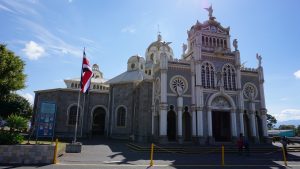 The province of Cartago is located east of San José and has an area of 3,125 km². This province also contains the city of Cartago, the former capital of Costa Rica, which was the first city in the country to be founded by Spanish conquerors in 1563. The city impresses with some fantastic buildings and with its beautiful basilica is definitely worth a visit and the locals know that too. Every year, thousands of Costa Ricans make a pilgrimage to the Basílica de Nuestra Señora de Los Ángeles on August 2nd.
The province of Cartago is located east of San José and has an area of 3,125 km². This province also contains the city of Cartago, the former capital of Costa Rica, which was the first city in the country to be founded by Spanish conquerors in 1563. The city impresses with some fantastic buildings and with its beautiful basilica is definitely worth a visit and the locals know that too. Every year, thousands of Costa Ricans make a pilgrimage to the Basílica de Nuestra Señora de Los Ángeles on August 2nd.
In addition to the well-known city, the province also offers national parks and magnificent valleys worth visiting. The national park with the Irazu volcano and its bright green crater lagoon is one of the most popular parks in the country. In contrast, the landscape at the Turrialba volcano with green mountain slopes and black and white cows exudes a very special charm in Costa Rica. Coffee connoisseurs among travelers will get their money’s worth in the province of Cartago because one of the best coffees in the country grows in the beautiful Orosi Valley.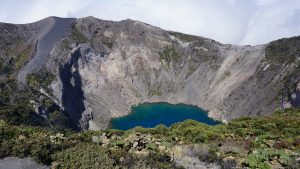
Some of the few testimonies of Indian history from pre-Columbian times have been found at the . Uncovered stairways, cobbled streets, tombs, rock carvings and aqueducts suggest that it was here between 1000 BC and 1000 BC. and in 1400 AD there was a settlement. Today Guayabo is protected as a national monument. So if you want to visit an original and tranquil region of the country, the province of Cartago is the right place for you.
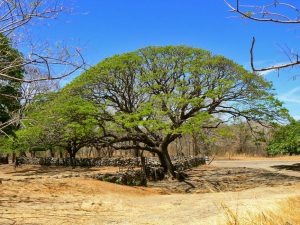
The province of Guanacaste stretches in the northwest of the country to the border of Nicaragua and over a large part of the Nicoya Peninsula. Guanacaste is bordered on one side by the Pacific and on the other side by the mountain range.
This region of the country is very dry and hot, which is also reflected in the vegetation. In the Santa Rosa National Park, for example, you can marvel at one of the last dry forests in Central America. Guanacaste is particularly beautiful in February and March, when the trees are in full bloom. The red and yellow flowers appear like fire and can be seen from afar. In summer, dry season, the trees lose their leaves and begin to flower. Large pastures and herds of cattle also characterize the landscape.
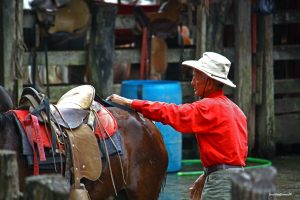 The population in Guanacaste often lives off livestock farming. You can often see the sabaneros (cowboys) riding their small agile horses across the huge pastures. The popular rodeos happen almost every week in one of the towns of Guanacaste. Daring young men ride the largest and strongest bulls and try to stay on the back of the bucking animal for as long as possible.
The population in Guanacaste often lives off livestock farming. You can often see the sabaneros (cowboys) riding their small agile horses across the huge pastures. The popular rodeos happen almost every week in one of the towns of Guanacaste. Daring young men ride the largest and strongest bulls and try to stay on the back of the bucking animal for as long as possible.
The volcanoes Rincón de la Vieja and the volcano Orosi also belong to Guanacaste and are worth a visit. In addition to a beautiful landscape, you can marvel at volcanic activity such as small geysers and fumaroles. On the border with the province of Alajuela, the vegetation is once again characterized by the humid rainforests.
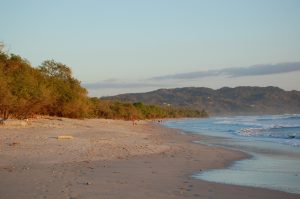 Guanacaste is particularly well known for the beautiful beaches that stretch along the entire coast. There are lonely bays and well-known beaches like Tamarindo and Flamingo. A construction boom broke out in this region but is limited to a few areas so there are still peaceful beaches to be found. The beaches in the Las Baulas National Park and Ostional are known for the large number of turtles that come here to lay their eggs. If you would like to observe this natural wonder we ask you, as described under the province of Limon, only to do so under expert guidance and not to disturb the animals with flashlights or light-colored clothing.
Guanacaste is particularly well known for the beautiful beaches that stretch along the entire coast. There are lonely bays and well-known beaches like Tamarindo and Flamingo. A construction boom broke out in this region but is limited to a few areas so there are still peaceful beaches to be found. The beaches in the Las Baulas National Park and Ostional are known for the large number of turtles that come here to lay their eggs. If you would like to observe this natural wonder we ask you, as described under the province of Limon, only to do so under expert guidance and not to disturb the animals with flashlights or light-colored clothing.
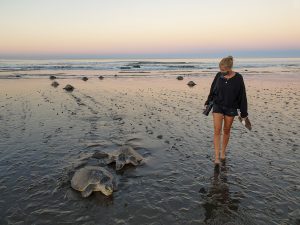 In September and October the arribada (mass arrival) comes to the beach in Ostional and you can see thousands of turtles laying their eggs during the day. Anyone who is surprised that locals are digging up the eggs on the Ostional beach should know that there is a unique but successful concept here to unite the interests of nature conservation and the locals. For the first 36 hours after arrival, the residents of the surrounding villages are allowed to dig up the eggs and offer them for sale (they have always done this and it is an important source of income in the economically weak region). The reason for this 36-hour rule is that the large number of turtles arriving would destroy the eggs laid beforehand over several days anyway.
In September and October the arribada (mass arrival) comes to the beach in Ostional and you can see thousands of turtles laying their eggs during the day. Anyone who is surprised that locals are digging up the eggs on the Ostional beach should know that there is a unique but successful concept here to unite the interests of nature conservation and the locals. For the first 36 hours after arrival, the residents of the surrounding villages are allowed to dig up the eggs and offer them for sale (they have always done this and it is an important source of income in the economically weak region). The reason for this 36-hour rule is that the large number of turtles arriving would destroy the eggs laid beforehand over several days anyway.
The beaches themselves range from light sandy beaches such as the well-known shell beach Conchal, to lonely golden beaches in the remote areas south of Samara. You have the choice between beaches with strong waves that are great for surfing and very quiet bays where you can enjoy snorkeling.
Anyone who imagines simply driving the coastal road from the northern beaches down to the southern tip of Nicoya should not underestimate the route. From Playa Hermosa to Santa Teresa, you need a good 9 hours (70km) and have to cross about 8 rivers, some of which are dependent on the tides. In the US, the “road” would be described as a poor dirt road, but this route is definitely one thing, a wonderful adventure.
Guanacaste not only has dry areas but also a unique wetland, the Palo Verde National Park. Here you can watch thousands of birds that forage for food in the flooded areas and raise their young.
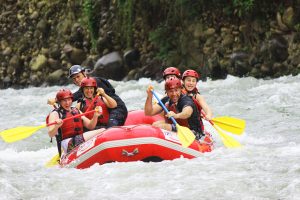
Many people initially only know the city of Heredia, which borders on the foothills of San José but in fact the province of Heredia extends over the Barva volcano, the Braulio Carrillo National Park, over the entire region around Sarapiquí to the border with Nicaragua river basin of the Río San Juans.
If you drive from the central valley through the province of Heredia, through the city of Heredia (which has a few beautiful colonial buildings) you will reach the mountains. The mountain slopes here are characterized by coffee plantations, which you drive through before the unique rainforest of the Braulio Carrillo National Park. A one-lane road winds its way through the middle of the national park down to the Caribbean lowlands. To the right and left is a view of steep mountain slopes covered with ferns and trees, and sometimes you can even see waterfalls tumbling down. It is recommended to drive this road in daylight as it often gets very foggy in the evening.
The area around Sarapiquí is particularly popular with travelers. There are still original tropical rainforests here like the Biological Station La Selva which has a large variety of animals and plants. This region offers many opportunities for activities such as rafting and kayaking on the higher elevations of the Sarapiquí River and floating and boat tours, horseback riding and countless opportunities for bird and wildlife watching on the lower reaches of the river.
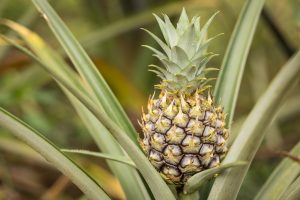 A large part of the area is now heavily influenced by agriculture. Large monocultures of banana and pineapple plantations characterize entire areas. The cultivation of pineapples in particular has increased significantly in recent years, as the demand for the sweet pineapple produced in Costa Rica has grown significantly in Europe and overseas. More and more rainforests are falling victim to the large plantation owners. The consequences are rivers heavily contaminated by pesticides and huge fields that are depleted. Therefore, when buying bananas and pineapples in the US, please make sure that you buy products from organic farming or fair trade. Costa Rica’s people and nature will thank you for it!
A large part of the area is now heavily influenced by agriculture. Large monocultures of banana and pineapple plantations characterize entire areas. The cultivation of pineapples in particular has increased significantly in recent years, as the demand for the sweet pineapple produced in Costa Rica has grown significantly in Europe and overseas. More and more rainforests are falling victim to the large plantation owners. The consequences are rivers heavily contaminated by pesticides and huge fields that are depleted. Therefore, when buying bananas and pineapples in the US, please make sure that you buy products from organic farming or fair trade. Costa Rica’s people and nature will thank you for it!
The extreme north of the province is also characterized by agriculture. In addition to teak, yuca and pineapple plantations, there are some cattle pastures. Very close to the border to Nicaragua in an area that is rarely visited you can still find untouched primary rainforest. The rare Great green macaw, has also retreated to this area. Here there are still some of the huge Almendro trees that the macaws use for nesting. Animal watching and a unique jungle feeling are guaranteed in this region.
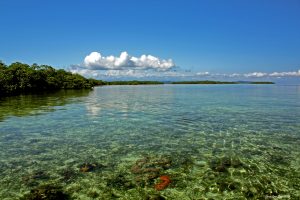 Limón stretches along almost the entire Caribbean coast and is home to a very diverse flora and fauna. The largest town in the province is Limón. Apart from a large port, which is often used as a cruise ship station, the city has little to offer. It is better to focus on the towns of Cahuita, Puerto Viejo de Talamanca and Tortuguero during your vacation.
Limón stretches along almost the entire Caribbean coast and is home to a very diverse flora and fauna. The largest town in the province is Limón. Apart from a large port, which is often used as a cruise ship station, the city has little to offer. It is better to focus on the towns of Cahuita, Puerto Viejo de Talamanca and Tortuguero during your vacation.
Cahuita and Puerto Viejo are two alternative towns that are home to many small bungalow lodges, restaurants and bars. So if you want to spend a nice evening with a cocktail on a warm summer night, you’ve come to the right place. For all nature lovers there are two national parks worth seeing in the region, the Cahuita and the Gandoca Manzanillo National Park. Both invite you to take coastal walks or long walks on the beach and swimming. Divers also get their money’s worth here and can explore the offshore reefs with one of the diving companies. Since the border to Panama is not far, you can combine a stay in Puerto Viejo and Cahuita with a trip to Bocas del Toro in Panama. To do this, simply cross the border at Sixaola.
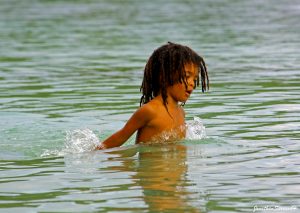 If you are drawn to the mountains, you can also take a detour to the Talamanca Cordillera in the province of Limón. A visit to the Bananito Sur region is particularly suitable. You can stay in a small lodge in the middle of the jungle and go on a variety of excursions into the mountains. If you can and want to do without any luxury and are interested in the indigenous culture of Costa Rica, you should visit one of the peoples such as the Bri Bri Indians in the mountains and get to know their way of life.
If you are drawn to the mountains, you can also take a detour to the Talamanca Cordillera in the province of Limón. A visit to the Bananito Sur region is particularly suitable. You can stay in a small lodge in the middle of the jungle and go on a variety of excursions into the mountains. If you can and want to do without any luxury and are interested in the indigenous culture of Costa Rica, you should visit one of the peoples such as the Bri Bri Indians in the mountains and get to know their way of life.
Tortuguero, the village in the national park of the same name, can only be reached by boat or plane. This region is a favorite of wildlife watchers and photographers as you can get all kinds of things in front of the lens. It is not unusual to see 3 species of monkeys, crocodiles, turtles, lizards, sloths, snakes and much more on your excursions. At certain times of the year, under strict supervision, you can even watch the large leatherback turtles laying their eggs.
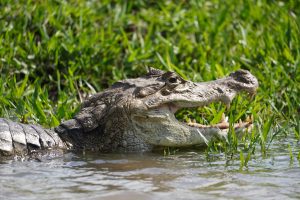
The largest province of Costa Rica is Puntarenas. It is named after the town of Puntarenas, which extends on a promontory in the north of the province. Puntarenas is the administrative center and also has the largest port on the Pacific side. It offers ferry services to the Nicoya Peninsula and serves as a port of call for cruise ships.
Puntarenas has many beautiful beaches to offer while the northern regions are lined with larger hotels. Driving south along the coast, the bridge on the Río Tarcoles is usually the first stop. Here you can sometimes watch between 10 and 20 large saltwater crocodiles sunbathing from a safe distance. You can relax on the beaches of Herradura, Jacó and Hermosa and watch the surfers or take a trip inland to see the Carara National Park.
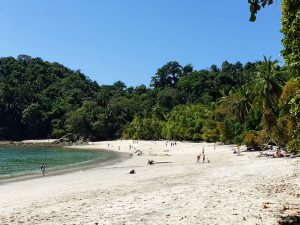 The next stop for many is Manuel Antonio National Park. The park is located on a small peninsula and has probably the most beautiful beaches in Costa Rica. Since this is widely advertised, they are not only the most beautiful but also the most crowded.
The next stop for many is Manuel Antonio National Park. The park is located on a small peninsula and has probably the most beautiful beaches in Costa Rica. Since this is widely advertised, they are not only the most beautiful but also the most crowded.
The south of Puntarenas is very scenic. The national parks Marino Ballena, Corcovado and Piedras Blancas await you with unspoiled beaches, diverse flora and fauna and great excursion possibilities. Underwater you can discover sharks and rays during a dive and with a bit of luck you can spot whales off the Osa Peninsula and in the Golfo Dulce from July to September or in December and January. In Puntarenas you can also indulge in your passion for the mountains and in La Amistad National Park which crosses the border of Panama in different hikes. A good starting point for this is the small town of San Vito. If you are drawn to Panama, you can easily cross the border at Paso Canoas.
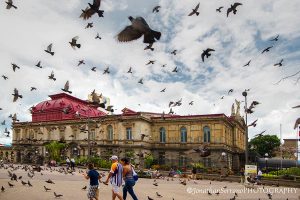
San José is Costa Rica’s capital and at the same time represents one of the 7 regions in the country. The lively metropolis in the central valley and also large parts of the Talamanca cordillera belong to the province. In addition to the capital which houses a great theater, an exciting market and the National Museum, the following cities and towns are of tourist interest in the province of San José: Cuidad Colón, Santa Ana, Santiago de Puriscal, San Isidrio de General and Escazu.
Ciudad Colón and Santa Ana are two towns that have almost grown together. They are a good way to start a vacation in Costa Rica. There is a small town center for errands, some local restaurants and a few small hotels.
Driving up the mountains from Ciudad Colón via Guayabo it takes about 45 minutes to get to Santiago de Puriscal. The city is around 1,100 meters above sea level and has a bustling city center centered around the imposing cathedral, which was severely damaged by an earthquake. Continuing the route through the mountains takes you into and through a cloud forest of Costa Rica. Sections that are particularly attractive for hikers can be found around Santa Maria de Dota and San Gerardo de Dota. A little tip for all bird lovers: this is also the region with the highest probability of spotting the quetzal, the bird of the gods.
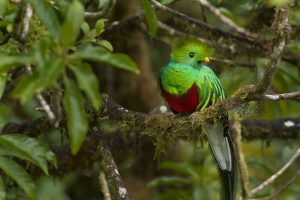 A little further up the mountain you cross the tree line and reach Cerro Chirripó, which at 3,820 meters is the highest mountain in Costa Rica. This is the starting point for numerous hikes and with a bit of luck you will have a wonderful view of the Pacific and the Atlantic from the top.
A little further up the mountain you cross the tree line and reach Cerro Chirripó, which at 3,820 meters is the highest mountain in Costa Rica. This is the starting point for numerous hikes and with a bit of luck you will have a wonderful view of the Pacific and the Atlantic from the top.
If you continue towards the coast, you will soon reach the small town of San Isidro de El General (Perez Zeledón). You can run all kinds of errands and get a last breath of cool mountain air before you reach the coast.
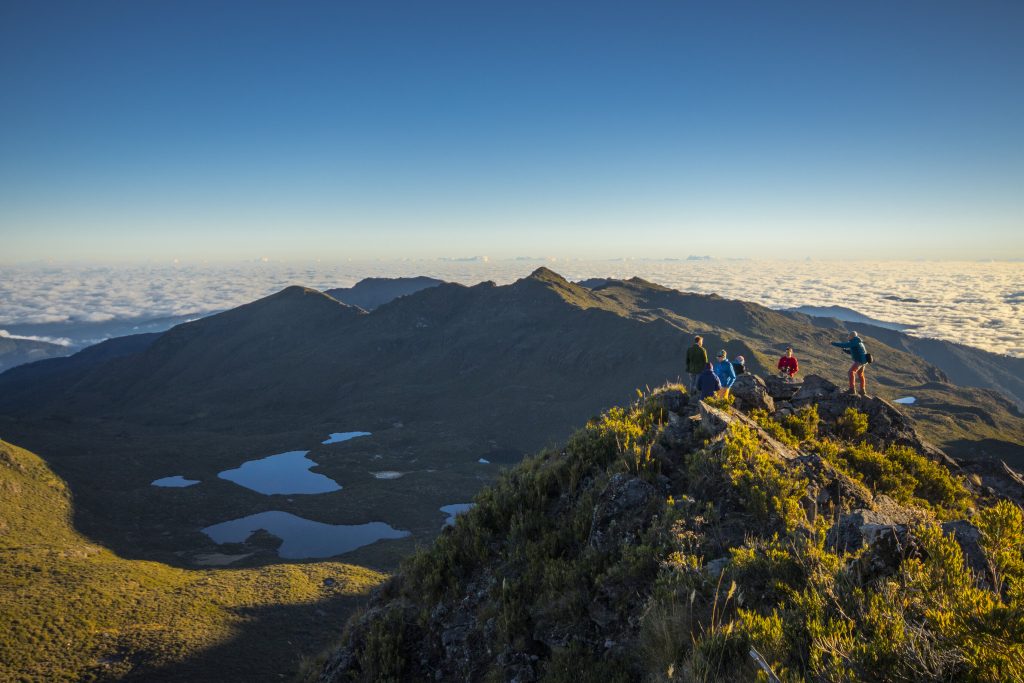
Which places and regions are worth visiting? We have compiled the “places to be” for you. Visit beaches, volcanoes and towns.
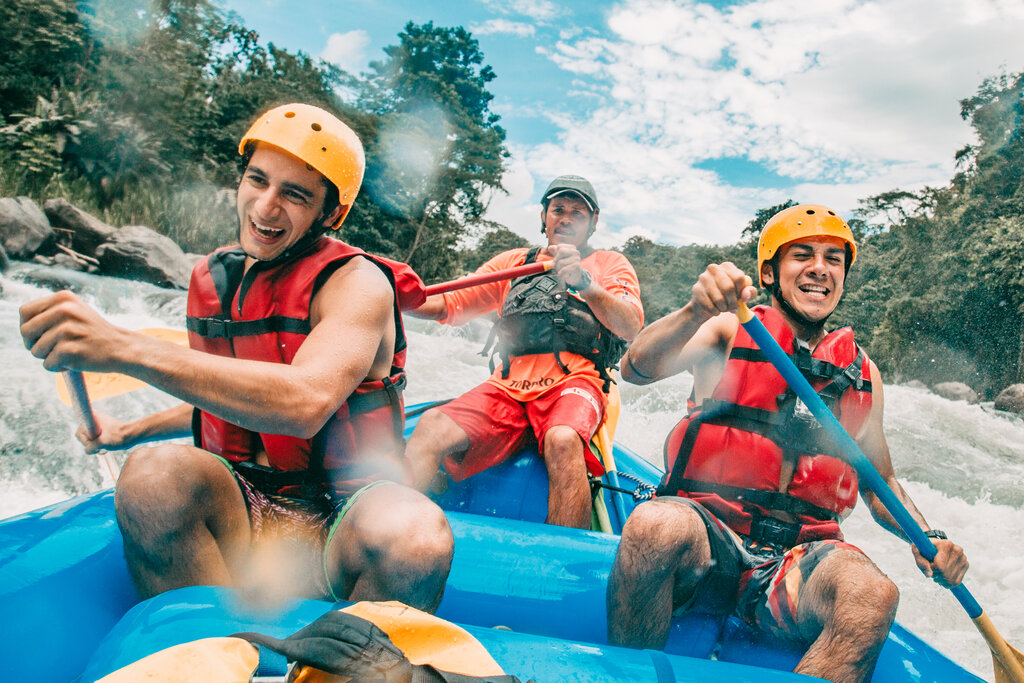
The possibilities are endless. Those with a head for heights can enjoy a canopy tour while ocean lovers ride waves surfing.

Many questions such as “What do I need to enter the country” arise during the travel planning. We answer these questions for you.
We are your contacts for a successful stay in Costa Rica and look forward to your inquiries: info@costaricainsider.com